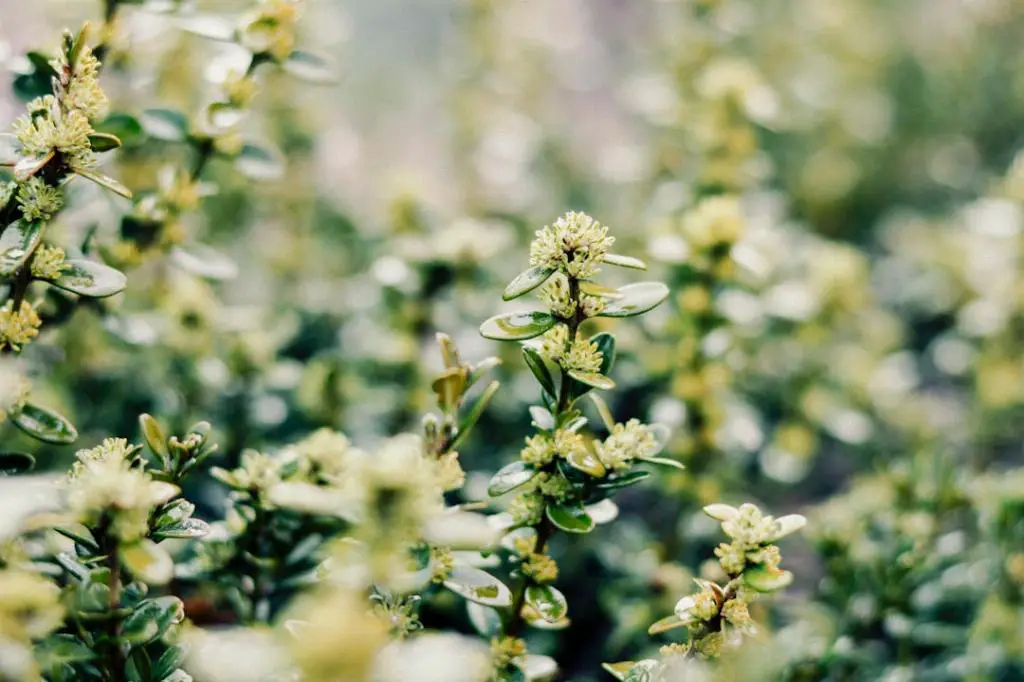Boxwood blight is a serious fungal disease that affects boxwood plants, causing defoliation, dieback, and ultimately leading to plant death. The disease is caused by the pathogen Cylindrocladium buxicola, which spreads through spores and can survive in the soil for up to six years.
Identification and Early Detection
Early detection of boxwood blight is crucial in preventing its spread. Look out for symptoms such as dark brown spots on leaves, black streaks on stems, and leaf drop. If you suspect your boxwood plants are infected, act promptly to prevent further spread.
Effective Removal of Infected Plants
To get rid of boxwood blight, infected plants must be carefully dug out, ensuring that all roots are removed. It is essential to collect all leaf litter as well. The infected plant material should be burned, buried at least two feet deep, or double-bagged and disposed of in a landfill.
Preventative Measures for Future Plantings
Given that the spores of boxwood blight can linger in the soil for several years, it is imperative not to replant susceptible boxwood cultivars in the same location for at least six years after removing infected plants. Consider planting resistant cultivars or other plant species in the affected area.
Maintaining Healthy Plants
Proper plant care practices, such as adequate spacing between plants to promote airflow, avoiding overhead watering, and disinfecting pruning tools between cuts, can help prevent the spread of boxwood blight. Regularly monitor plants for any signs of disease and take swift action if symptoms are observed.
Utilizing Fungicides
In severe cases of boxwood blight, fungicides may be necessary to control the disease. Consult with a professional arborist or horticulturist to determine the most effective fungicide and application method for your specific situation. Follow all label instructions carefully when using fungicides.
Enhancing Soil Health
Healthy soil promotes strong plant growth and overall plant resilience to diseases like boxwood blight. Consider amending the soil with organic matter, ensuring proper drainage, and avoiding over-fertilization. Healthy plants are better equipped to fight off pathogens.
Practicing Good Garden Hygiene
Regularly clean up garden debris, fallen leaves, and any diseased plant material to reduce the risk of disease spread. Dispose of plant waste properly and avoid composting infected plant material. Keep garden tools clean and sterilize them between uses.
Education and Awareness
Stay informed about common plant diseases like boxwood blight, their symptoms, and management strategies. Attend workshops, read publications, and consult with gardening experts to expand your knowledge and skills in disease prevention and management.
Seeking Professional Help
If you are unsure about diagnosing or treating boxwood blight in your garden, do not hesitate to seek assistance from professional gardeners, arborists, or extension services. They can provide expert advice, conduct plant inspections, and recommend tailored solutions for your specific situation.
Monitoring and Evaluation
After taking steps to address boxwood blight in your garden, continue to monitor your plants regularly for any resurgence of the disease. Evaluate the effectiveness of your management practices and make adjustments as needed to maintain healthy, disease-resistant plants.
Conclusion
Getting rid of boxwood blight requires a combination of proactive measures, careful plant removal, preventative strategies, and ongoing monitoring. By staying vigilant and implementing effective disease management practices, you can protect your boxwood plants and promote a healthy garden environment free from boxwood blight.

